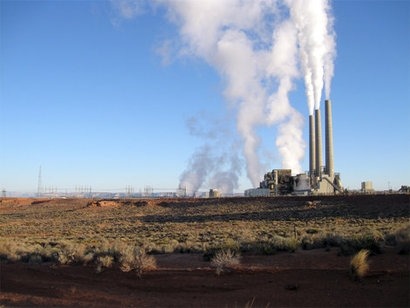
The report, End of an Era: Navajo Generating Station Is No Longer Economic, concludes that the power plant, which is situated on land owned by the Navajo Nation and dates from the 1970’s, can no longer compete with power produced by other means, particularly renewable energy. It is owned jointly by the Salt River Project, the U.S. Bureau of Reclamation, the Arizona Public Service Company, Nevada Power, and Tucson Electric Power and is being considered for shutdown by 2019.
The study puts the cost of propping up the plant from mid-2017 through to the end of 2019 at $414 million. Keeping it running until 2030 would require a total bailout of $1.4 billion to $2.4 billion. It notes also that the viability of the plant in recent years has been dealt a circular one-two punch. First, the price of the power being sold by the plant has not covered the full cost of producing it. In other words, it is operating at a net loss for each of the MWh of power it sells. Secondly, as the cost of producing the power at the plant has risen, the plant has begun to produce significantly less power in recent years than it had previously generated.
“Declining energy market prices and rising production costs have made the power produced by the plant more expensive than power sold in the larger energy market” wrote David Schlissel, the author of the report and IEEFA’s director of resource planning analysis. “These factors are not likely to change, leaving the plant’s financial viability in doubt - regardless of who owns it. In short, keeping the Navajo Generating Station online would require at least hundreds of millions of dollars in subsidies over the short term and billions over the longer term.”
Schlissel added that it is increasingly likely that higher generation from increasingly affordable renewable resources will put even further pressures on the plant, both by displacing generation that would otherwise have been generated at the plant and by keeping energy market prices low.
The report highlights fundamental economy-sector changes in recent years that have affected many coal plants across the US. These include very low natural gas prices, rising plant production costs and declining generation due to increasing competition from renewable energy resources and increased generation at natural gas-fired units. This trend will continue to escalate in forthcoming years and so the report concludes that it would be better to plan immediately for the plant’s retirement of the plant and toward an orderly transition to a profitable and sustainable energy economy.
Image: Alan Stark, Flickr
For additional information:
Full report here: “End of an Era: Navajo Generating Station Is No Longer Economic”
Institute for Energy Economics and Financial Analysis (IEEFA)

